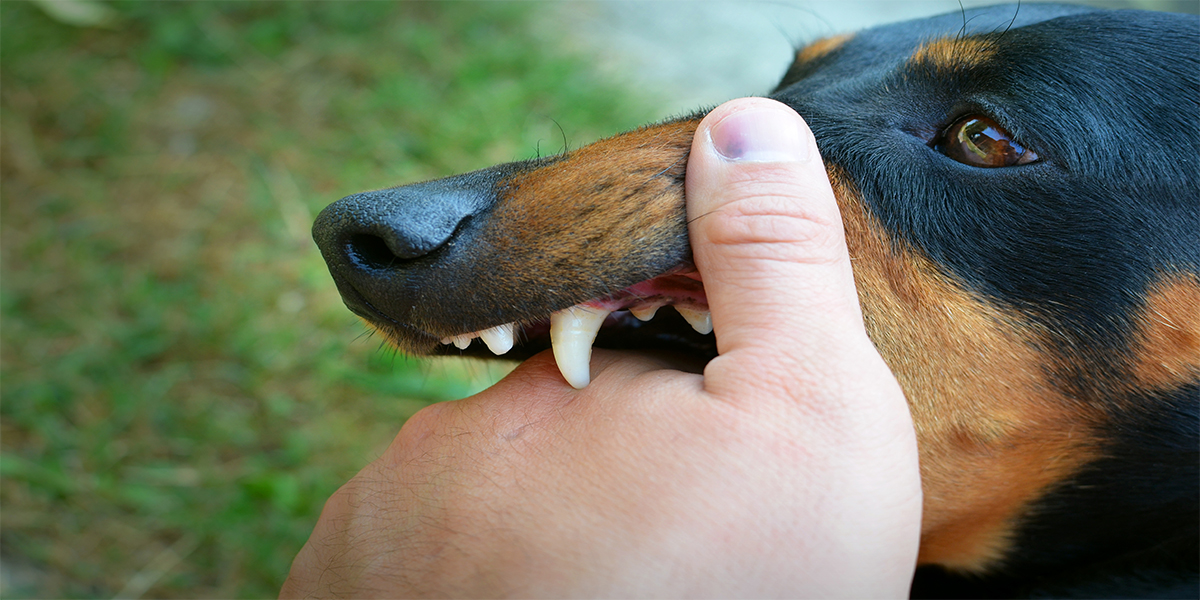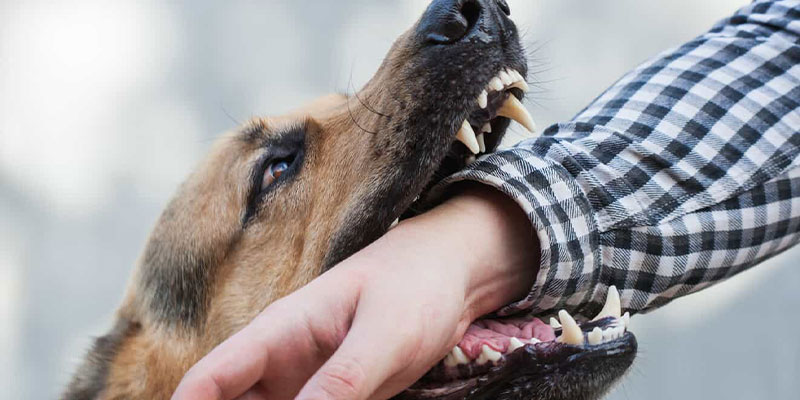Puppy Bite , Rabies can be spread by puppy bites , Being a pet parent, the most common fear of a disease, we have is of Dog rabies, right? Why do you care about the dog bite if your dog is vaccinated?
Whether your dog is vaccinated or not if you had a dog bite, for your prevention three vaccination shots are advisable. Consult the doctor and let him examine your wound accordingly, he will tell if you need three shots or more Because rabies can be prevented but once you get it, there is no cure or treatment available. This is why you shouldn’t risk your health “Hey bro, it’s just a minor scratch. Don’t worry nothing will happen” Doesn’t matter if it is your pet dog or a stray dog caused a little scratch on your skin.
Puppy Bite, Bleeding through the wound is not necessary even if there is a normal scratch then you should treat it as a normal dog bite and I will tell you about the treatment in the next video But for now, make sure to not to treat it lightly, consider it the same as a dog bite “Are you insane?
Rabies from puppy bite, rabies from Dog bite, Rabies is only spread from the dog bite” this is not necessary that rabies spread only through do bites there are a lot of animal bites that can cause rabies For example, other than dogs cats, cattle, buffalopigs, sheep, goat, mules horses.

Vicious dog showing teeth and biting hand.
Puppy Bite, All these animals can cause rabies and only the bite doesn’t need to cause rabies There are a lot of places, where you can find bat caves where you can find a lot of bats altogetherthrough research, we found out that the rabies virus was present in the air inside the caves So, this particular thing is called Aerosol Route if you got bitten by a puppy, let’s go for vaccination. In case, while playing with your puppy
Puppy Bite ,who is younger than 3 months, has bitten you
You are bleeding a little, there is no need to panic because the puppies have immunity against rabies until that age which comes while they are being breastfed So, through the milk, their bodies they get this immunity. So, Puppy Bite, next time if a puppy younger than 3 months has bitten you, don’t worry Come on, it is just a dog bite.
Here, do one thing, take cathedral bells put red chilly on it put mustard oil in it and put it on the wound, that is all All these remedies aren’t scientifically proven and it nowhere states that, this method the rabies virus aka Lyssavirus will be terminated
Puppy Bite, What happens is the rabies virus keeps on moving inside the animal’s body So, it is not necessary that a rabid dog
(a dog who has rabies) always has that virus in the saliva So, in case if a dog has rabies and he bites you and there was no virus present in his saliva and you went on with that home remedy thinking that it was effective. But actually, this is not the case. You were unaffected because there’s no virus in the saliva of the animals.
Rabies – Symptoms, and Treatment. How can you catch it?
Rabies is an acute viral disease of the central nervous system of mammals that is always fatal to humans.
What causes rabies? How can you catch rabies?
Puppy bite and rabies, The RNA virus belonging to the Rhabdoviridae family is responsible for causing rabies. Rabies is found among mammals. Pathogenic is the so-called street virus that occurs in free-living animals. Rabies is widespread and occurs practically anywhere in the world.
Puppy Bite, How is human rabies virus-infected is most often achieved by introducing the virus with saliva into the wound when bitten by a sick animal. Contamination with contaminated material, especially animal saliva, damaged skin, conjunctiva, or mucous membranes can also be serious.
Other contactn, sucontactuching, stroking, carrying a sick or rabid animal only exception may be an indication for prophylactic treatment.
Rabies diagnosis is based on:
Puppy Bite, detection of rabies virus antigen by direct immunofluorescence in a sample taken from a patient or a sick animal. This examination is performed mainly postmortem to confirm the cause of death, and the brain tissue is collected for examination ;
isolation of the virus from biological material (saliva, cerebrospinal fluid, brain) and biological assay in cell culture or laboratory mice. The biological test consists in infecting a cell line (most often neuroblastoma cells) or administering appropriately developed clinical material to the central nervous system of mice;
confirmation of the presence of antibodies neutralizing rabies virus by serological methods in the blood serum or the cerebrospinal fluid of an unvaccinated person;
demonstrating the presence of viral genetic material in the clinical specimen, i.e. saliva, cerebrospinal fluid, based on the polymerase chain reaction (PCR) method. This method is very sensitive and detects the virus in a very small amount of material and is relatively quick. Molecular methods are widely used in epidemiological studies to determine the focus of infection. In conjunction with sequencing, PCR can be used to distinguish rabies virus variants.

Negative results of the patient’s diagnostic tests do not rule out rabies virus infection.
Rabies treatment
In the treatment of rabies, it is most important to increase immunity by vaccinating the exposed person. No antiviral drugs are administered, but only the body is stimulated to increase the immune response (active immunization), or ready-made serum-containing immune proteins neutralizing the rabies virus are isadministereddly (so-called passive immunization).
Click Here For: THE DALMATIAN DOG: EVERYTHING TO KNOW ABOUT THE FAMOUS DOG
Rabies vaccine
Puppy Bite, Vaccines are generally prepared based on genotype 1 of the virus, but they also protect against infections with other types of the virus. We distinguish:
prophylactic vaccination – recommended for people at risk of infection, usually due to their profession. Vaccination is carried out according to schedules 0 (first initiation dose), 7 (seven days after the first dose), and 21 (28) (21 or 28 days after the first dose). The next dose of the vaccine, the so-called booster dose, can be administered after one year, after obligatory prior control of the antibody titer (booster vaccination is recommended at a titer equal to or below 0.5 IU / ml);
vaccination after exposure- is carried out in people who have been bitten by a wild animal, bat, rabid domestic anima,l or in which rabies has not been ruled out. Vaccination is also recommended in the event of contamination of the skin, mucous membranes, or eyes with saliva or nerve tissue from a sick animal.
The rabies vaccine is administered to humans intramuscularly in 5 doses according to the schedule: 0 (preferably on the day of exposure), 3, 7, 14, 28 days. In severe bites, when the Puppy Bite ,bites are extensive, affect the head, neck, or hands, passive-active immunization is used and, in addition to the vaccine, serum with antibodies is administered.
This consists of the administration of the full dose of immune serum (passive immunization) with the simultaneous initiation of the vaccination course (active immunization). It is also recommended to sprinkle it into the wound and soak it around the wound with antiserum. People undergoing passive-active immunization are hospitalized according to the manufacturer’s recommendations, the vaccine is administered intramuscularly into the deltoid muscle or deeply subcutaneous.



